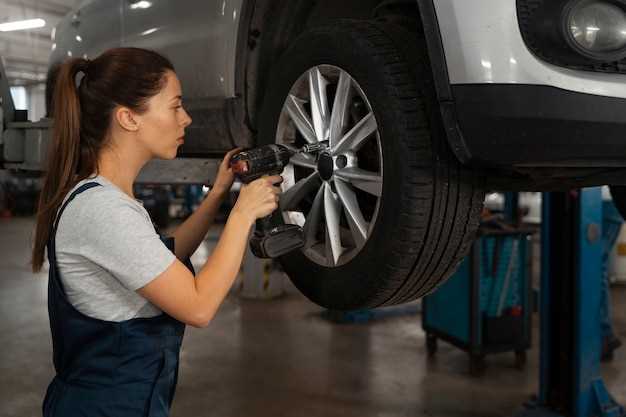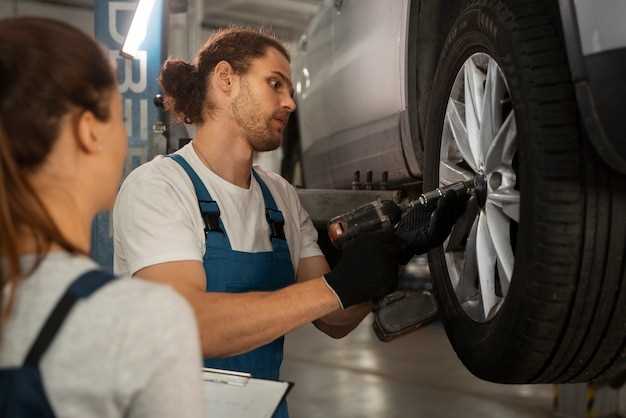

Effective management of tire wear during extended driving sessions is crucial for both performance and safety. As the duration of the driving increases, understanding the dynamics of tire degradation becomes essential for anyone looking to optimize their vehicle’s performance. Implementing appropriate strategies ensures not only longevity of the tires but also enhances the overall driving experience.
A significant factor influencing tire wear is the driving style adopted during long sessions. Aggressive acceleration, hard braking, and high-speed cornering all contribute to accelerated tire degradation. By adjusting driving techniques–such as smoothing inputs and maintaining consistent speeds–drivers can significantly minimize wear. Recognizing the relationship between tire management and driving style can lead to more effective practices that extend tire life.
In addition to adjusting driving habits, maintaining proper tire pressure and regularly rotating tires are essential components of a comprehensive wear management strategy. These practices not only promote even wear across all tires but also enhance vehicle handling and efficiency. By prioritizing both driving style and proactive tire management, drivers can ensure that their tires perform optimally throughout long sessions.
Optimizing Tire Pressure for Consistent Performance

One of the most critical aspects of tire management during long sessions is maintaining the correct tire pressure. Proper tire pressure ensures that the contact patch remains optimal, which directly impacts both grip and tire longevity. An under-inflated tire can lead to excessive flexing, resulting in increased heat and uneven wear, while an over-inflated tire may decrease the tire’s contact area, leading to reduced traction.
To achieve consistent performance, it is essential to regularly check and adjust tire pressure based on several factors:
1. Temperature Variations: Tire pressure can fluctuate with changes in temperature. Always adjust tire pressure when they are cold, preferably before driving or after a cooling period. A good rule of thumb is to check pressures in the morning before hitting the track, as this will provide a baseline measurement unaffected by heat from driving.
2. Driving Style: Different driving styles may require different tire pressures. Aggressive driving may necessitate a slightly higher pressure to prevent excessive sidewall flex, while a smoother driving technique might allow for lower pressures to enhance grip. Understanding your driving style will help determine the optimum pressure for your tires.
3. Vehicle Load: In instances where the load on the vehicle changes, either due to added passengers or cargo, it’s crucial to recalibrate tire pressure accordingly. The manufacturer’s guidelines generally provide recommendations for various load scenarios, ensuring safe and effective tire management.
Maintaining the correct tire pressure not only enhances performance but also contributes to overall safety on the road. Regular monitoring and adjustments tailored to your specific conditions can significantly extend the life of your tires, ensuring that they perform consistently, session after session.
Adjusting Driving Style to Minimize Wear
Adapting your driving style can significantly impact tire wear, especially during extended driving sessions. The way you accelerate, brake, and navigate turns plays a crucial role in the longevity of your tires. By focusing on smoother, more efficient driving techniques, you can enhance tire management and minimize unnecessary degradation.
Firstly, gradual acceleration is key. Instead of rapid starts, applying a gentle touch on the accelerator reduces the strain on your tires, allowing them to maintain better traction and reducing the heat that contributes to wear. This approach not only preserves tire integrity but also improves fuel efficiency, benefiting both performance and the environment.
In addition to smooth acceleration, practice controlled braking. Avoid sudden stops and instead transition to braking well in advance of turns or stopping points. This technique keeps tires from skidding and experiencing excessive friction. Utilizing engine braking, when appropriate, can also assist in relieving pressure on the brake system and tires alike.
When cornering, aim for a balanced driving style. Taking turns too aggressively can lead to increased lateral forces on the tires, causing uneven wear patterns. Instead, slow down before entering a turn and maintain a steady speed throughout. This not only promotes better grip but also enhances overall vehicle stability.
Lastly, regular maintenance checks are essential. Monitoring tire pressure and alignment ensures optimal performance. Under-inflated tires or misaligned wheels can lead to premature wear regardless of driving style. By coupling attentive management with gradual driving habits, you can maximize the lifespan of your tires throughout long sessions.
Implementing Regular Tire Inspections and Maintenance

Regular tire inspections and maintenance are crucial for ensuring optimal performance and longevity of tires, especially during prolonged driving sessions. Establishing a routine for checking tire condition can significantly reduce wear and enhance safety on the road. Drivers should schedule periodic inspections to assess tread depth, sidewall integrity, and overall tire pressure, as these factors influence tire durability and handling.
A well-maintained tire not only improves driving style but also contributes to fuel efficiency. Proper inflation is essential; under-inflated tires can lead to increased tread wear and compromised traction, while over-inflated tires may cause uneven wear and reduced grip. Always use a reliable gauge to check tire pressure and adjust it according to the manufacturer’s specifications.
Another vital aspect of tire maintenance involves monitoring tread depth. Tires should have sufficient tread to ensure adequate grip in various driving conditions. A quick method to check tread depth is the penny test: insert a penny into the tread grooves, and if you can see the top of Lincoln’s head, it’s time to consider replacing the tires. Regularly rotating tires can also help in achieving even wear, thus extending their lifespan.
In addition to visual inspections, drivers should remain alert for unusual signs, such as vibrations or pulling to one side, which could indicate alignment issues or uneven wear patterns. Addressing these concerns promptly can prevent further damage and ensure a smoother driving experience.
By implementing a consistent schedule for tire inspections and maintenance, drivers can improve the performance of their vehicles while maximizing safety and comfort. Prioritizing tire health will not only enhance driving style but also contribute to a more efficient and enjoyable driving experience over long distances.







